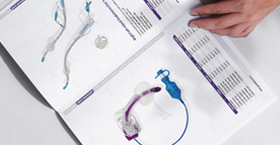Urological supplies encompass a broad array of devices and consumables designed to diagnose, treat, and manage disorders of the urinary tract. These items range from simple disposables—such as catheters and drainage bags—to sophisticated sensors and endoscopic accessories used during minimally invasive procedures. Their primary aims include ensuring effective bladder drainage, preventing infection, monitoring pressure dynamics, facilitating stone removal, and improving patient comfort during both acute and long‐term care. Proper selection, handling, and disposal of these supplies are critical to minimizing complications such as catheter-associated urinary tract infections (CAUTIs), urethral trauma, and device malfunction.
Below is a representative table highlighting some of the most commonly used urological supplies, their functions, materials, and typical clinical settings:
| Supply Item | Function | Material/Feature | Typical Setting |
|---|---|---|---|
| Foley Catheter | Continuous bladder drainage | Silicone or latex-free dual-lumen | Hospitals, Long-term Care |
| Intermittent Catheter | Periodic self-catheterization | Hydrophilic-coated PVC or polyurethane | Home Care, Outpatient Clinics |
| Urine Collection Bag | Secure collection of catheterized urine | EVA film with anti-reflux valve | Hospitals, Home Care |
| Urodynamic Pressure Transducer | Measures bladder pressure during filling and voiding | Stainless steel sensor | Urology Clinics, Research Labs |
| Cystoscopy Sheath | Protects endoscope; maintains irrigation flow | Medical-grade PVC with irrigation port | Endoscopy Suites |
| Stone Retrieval Basket | Captures and removes urinary calculi | Nitinol, radiopaque | Operating Theaters |
| Drainage Valve | Regulates urine flow; prevents backflow | ABS plastic with one-way valve | All Clinical Settings |
| Irrigation Set | Flushes bladder or urethra during procedures | PVC tubing with quick-connect fittings | Hospitals, Ambulatory Surgery |
Advances in material science have introduced low-friction, antimicrobial coatings and biodegradable polymers, significantly reducing the risk of infection and environmental impact. Emerging technologies—such as wireless pressure monitoring, smart catheter systems, and telehealth–integrated disposables—are poised to enhance patient autonomy and enable remote clinical oversight. Training healthcare providers in aseptic technique, device selection, and patient education remains paramount to optimizing outcomes and preserving the integrity of the urinary tract. As the prevalence of urological conditions continues to rise worldwide, the ongoing evolution of urological supplies will play a pivotal role in delivering safe, effective, and patient-centered care.
Related Products
• Portable Intermittent Catheter


 Français
Français Español
Español Products
Products

 About Us
About Us











